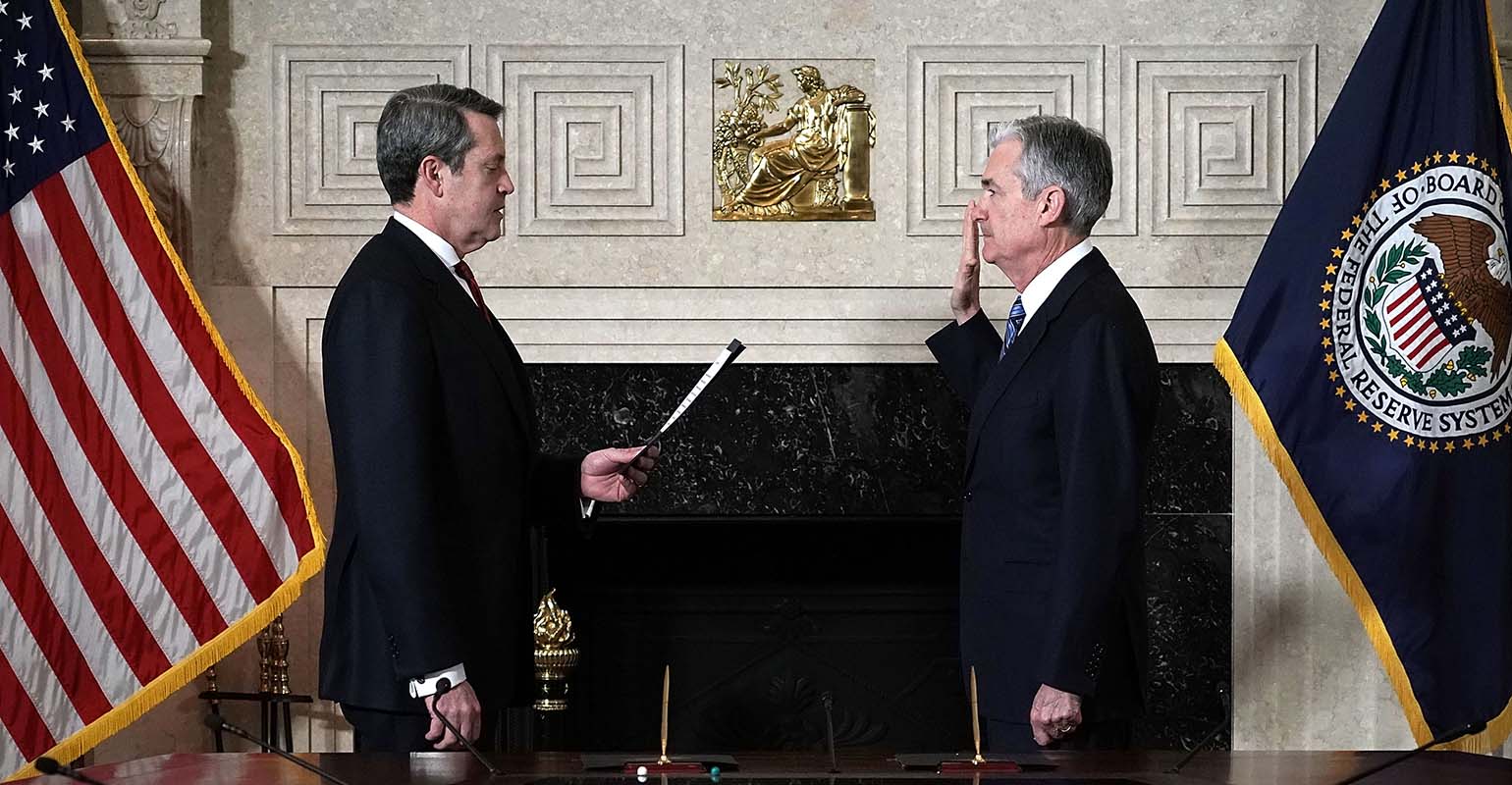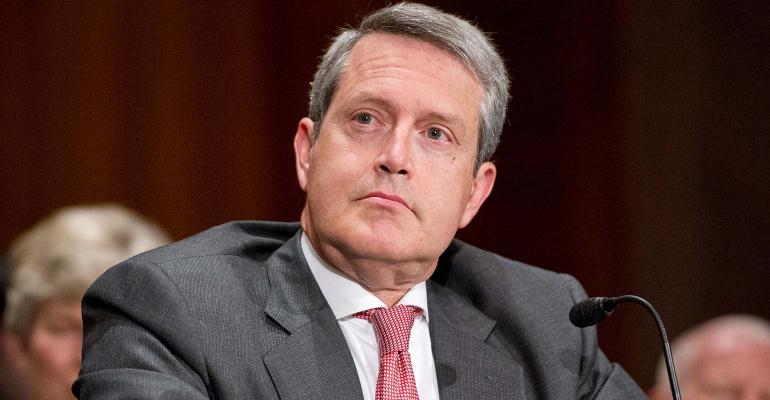The Cynosure Group, a Utah-based asset manager of private equity and alternative investments, always planned to build out an RIA.
But the effort accelerated—almost overnight—thanks to the failed Silicon Valley Bank and the subsequent exodus of its wealth managers. Seven SVB advisors have joined Cynosure in recent weeks, where they make up the entirety of the new firm's advisor force and likely one of the largest concentrations of that bank's advisors to regather under one entity.
In an interview with WealthManagement.com, Cynosure co-founder and President Randal Quarles said SVB’s collapse (and the accompanying advisor exodus) was a “big catalyst” for the new RIA.
“We were always going to do it,” he said. “We were in the mode of turning to it, but the inbound interest from SVB advisors is why it’s happening now, as opposed to a year from now.”
But the quick development of the wealth management business comes at the same time that Quarles, former vice chair for supervision at the Federal Reserve, has come under scrutiny for how he handled regulating the failed bank during his tenure. On Friday, Quarles' successor at the Fed released a post-mortem on SVB suggesting that culture shifts under Quarles may have played a role in the bank's downfall.
Quarles denies that and said the plans for the RIA were in place before the bank's collapse and subsequent hiring of the advisors. Cynosure Wealth Advisors, the new RIA, is led by Bill Woodson, an SVB alum who was with Boston Private before SVB bought its business in 2021. He joined Cynosure in February, before the weakness at the bank boiled over, to lead the rollout. (Woodson registered with Cynosure on April 5, according to his IAPD profile.)
“As these things happen, his inquiry came at exactly the right time when we were ready to devote a significant amount of attention to this part of the business,” Quarles said.
His presence made the new firm a beacon for other SVB advisors who found themselves stranded in the wake of the March collapse, Quarles said.
SVB became the largest bank to go under since the 2008 financial crisis and resulted in many advisors leaving for other homes, including Cerity and F.L.Putnam Investment Management.
In March, First Citizens agreed to buy SVB’s $72 billion in assets for $16.5 billion, but the fallout wasn’t confined to SVB alone. Signature Bank also went under, UBS bought Credit Suisse, and First Republic remained afloat with a $30 billion injection of deposits from 11 financial institutions (although the bank still struggles, as its market price dropped nearly 50% after its first quarter earnings report).
Woodson is running Cynosure’s wealth division along with Gary Sica, who also worked at Boston Private (unlike Woodson, he did not join SVB after the sale).

As Vice Chair for Supervision for the Federal Reserve, Randal Quarles (left) officiated over the swearing in of Fed Chair Jerome Powell in 2018.
Soon after SVB’s collapse, Quarles said Woodson and Cynosure got calls from SVB advisors. Quarles stressed that Cynosure had not been reaching out to poach advisors from the beleaguered bank.
“Advisors from SVB reached out shortly thereafter as they and many others were exploring their options,” Woodson said. “We were thoughtful about who we thought made sense to join us given what we hoped to accomplish at Cynosure, its other businesses, culture and client focus.”
Within a month’s time, Cynosure had an RIA division of seven advisors, not including Woodson and Sica, made up entirely of former SVB advisors.
Woodson called it a “somewhat synergistic” situation driven by SVB’s downfall, and estimated that Cynosure’s private equity, institutional and private client businesses totaled between $4 billion and $5 billion (with its assets under management totaling between $3.25 and $3.5 billion).
Cynosure’s roots are intertwined with the Eccles family, one of Utah’s most prominent (and wealthiest) families. The family’s history in the state starts with David Eccles, who traveled there from Scotland in the 1860s; the family eventually built significant wealth in railroads, lumber and banking, among other industries, according to Forbes. The family’s name is well known in the state, with the University of Utah’s business school named after its patriarch.
Cynosure was founded in 2014, initially assisting the Eccles family with private investments, and then portfolio management and wealth advisory services. Quarles, who married into the Eccles family, says Cynosure was never a family office; the plan was always to commercialize the business beyond the founding family.
“Cynosure was created to address all of that, to say ‘we have investment needs as a sizable family, and if we can create something that can address those investment needs, then that’s probably something others will find useful,’” Quarles said.
The firm first built its private equity business, with Quarles recruiting some of his former co-workers from The Carlyle Group, where he was a partner for more than six years.
Now, Quarles estimates that only about 25% of capital on the private asset side is from the Eccles family.
Part of commercializing the firm meant turbocharging efforts to offer wealth management services to other ultra-high-net-worth (UHNW) clients, a common evolution for many family office–type firms and a hope bolstered by Woodson, who reached out to Cynosure with an interest in building out the new RIA. While Cynosure previously invested in advisory firms from the PE side, this would be the first time it recruited advisors to work with individuals.
The more tenuous link with SVB stems from Quarles' time at the Federal Reserve. In 2017, Quarles was nominated to the board of the Fed by then-President Donald Trump and served as vice chair of supervision until October 2021. He resigned from Cynosure for the duration of his tenure and had "no contact" with the firm while he served, he said.
In 2018 and 2019, San Francisco’s Federal Reserve Bank prepared to place SVB under stricter regulatory measures due to the bank’s burgeoning level of assets, according to The New York Times.
But in 2018, Congress passed bipartisan legislation that eased the regulatory burden for smaller banks by repealing portions of the 2010 Dodd-Frank Act. The move in effect raised the asset level under which banks would come under closer federal supervision from $50 billion to $250 billion.
According to the regulatory watchdog organization Better Markets, the bill gave the Fed “broad discretion” to determine whether it should continue enforcing stronger oversight on banks with assets between $100 and $250 billion—the window where SVB fell at the time. Quarles, along with Fed Chair Jay Powell, used that discretion and withheld oversight of banks like SVB "far beyond what the law required and even beyond what some supporters of the law deemed appropriate," according to Better Markets. This move meant more stringent oversight of SVB was delayed until late 2021, according to the Times.
On Friday, the Fed released its own report on the crisis, written by Quarles' successor, specifically calling out the Fed's supervisory shortfalls that may have contributed to SVB’s downfall.
The report also described a shift in "culture and expectations" under Quarles' tenure unconnected to specific policies or procedures, which some felt lessened pressures on the banks.
“It is difficult to judge how these collective changes in policy affected the oversight of (SVB), but a review of the historical record and staff interviews suggest that they played a role,” the report read. “Although the stated intention of these policy changes was to improve the effectiveness of supervision, the changes also led to slower action by supervisory staff and a reluctance to escalate issues.”
Quarles told WealthManagement.com that critics of his regulatory decisions miss the point, and that the changes had nothing to do with SVB’s downfall, an argument he made earlier in an op-ed in The Wall Street Journal. SVB’s troubles largely stemmed from the actions of its uninsured depositors, he said, who behaved differently from typical business customers.
Quarles did feel there were areas deserving scrutiny, including why the Federal Deposit Insurance Corporation hadn’t resolved the problems at SVB faster, as well as potential regulatory changes more fitting to modern banking.
“There are questions we need to think through ... about long-standing assumptions that underlie some of the liquidity regulations of banks,” he said. “But that has nothing to do with what happened in 2019.”
In the meantime, Quarles and Cynosure will integrate the SVB advisors into the new wealth management firm, with long-term plans for "substantial" growth of the RIA, he said. That would come both organically as well as through the addition of more advisors.
“We’re not immediately reaching out to add other people, but I expect we’ll have a fair bit of inbound interest,” he said. “And it’s our intention to grow that interest significantly."





